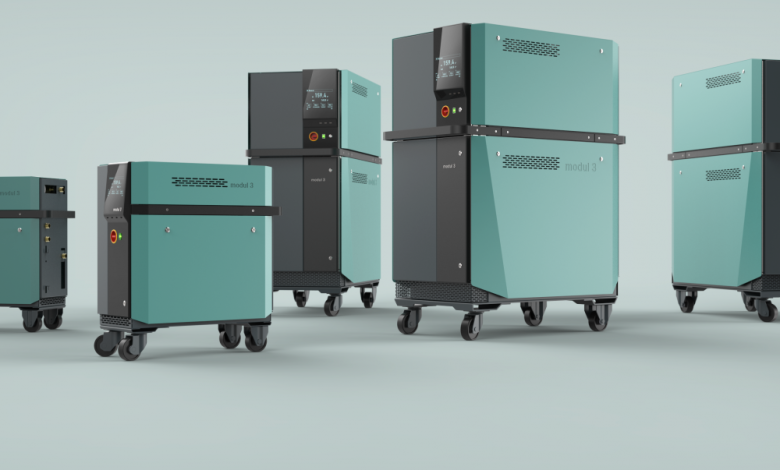Exploring 3D Printing and Vacuum Casting Processes

3D printing and vacuum casting are two modern manufacturing techniques useful for rapidly creating prototype parts or short run production. While the terms are sometimes used interchangeably, 3D printing and vacuum casting are quite different processes.
Understanding the unique capabilities and applications of each is important. Innovative manufacturing processes such as additive fabrication and vacuum molding enable rapid prototyping and short production runs. PlasticMoulds provides expertise in both methods to produce precise prototypes from CAD models.
How does 3D printing work?
3D printing, also known as additive manufacturing, is a technology for building three dimensional objects layer by layer from a digital file. There are several methods of 3D printing used in industry:
Fused Deposition Modeling (FDM)
FDM printers build parts by heating and extruding thermoplastic filament material layer by layer following a toolpath. Common materials are ABS and PLA.
Stereolithography (SLA)
SLA uses a UV laser to selectively cure liquid photopolymer resin layer by layer. After printing, parts are rinsed and thermally cured.
Selective Laser Sintering (SLS)
SLS prints parts in powdered material like nylon, thermoplastic, or metal powders fused by a high power laser. No support structures are required which allows intricate geometries.
Multi Jet Fusion (MJF)
MJF prints parts from nylon powder using an inkjet print head to selectively deposit fusing and detailing agents, which are then solidified with heat.
3D printing allows rapid iteration of designs directly from 3D CAD data. It is used for form and fit concept models, design verification, prototyping, and jigs and fixtures. Accuracy and surface finish can vary greatly depending on the 3D printing process used.
What is vacuum casting?
Vacuum casting is a manufacturing process to create detailed plastic parts using silicone molds, usually in short production runs. Liquid resin is poured into a silicone mold placed inside a vacuum chamber, and vacuum pressure pulls the resin evenly into all mold details before curing.
Silicone molds are created by 3D printing or CNC machining a master pattern, around which liquid silicone rubber is poured to form the mold. The silicone accurately picks up every surface detail, enabling the molding of intricate plastic parts not achievable with hard tooling.
Urethane resins are typically used, which cure at room temperature with negligible shrinkage. The cured plastic parts can have excellent dimensional accuracy and appearance resembling final production materials. Vacuum cast parts can be machined, tapped, painted, plated, or assembled just like production plastics.
Key differences between 3D printing and vacuum casting
While 3D printing and vacuum casting both enable rapid part creation suitable for prototyping and low volume production, there are important differences:
1. Mold requirements
3D printing builds parts directly without any mold. Vacuum casting requires creating a silicone mold first to enable part duplication.
2. Production volumes
3D printing is generally faster for single prototype parts. Vacuum casting excels at small batches of 10-100+ parts due to reusing the silicone mold.
3. Dimensional accuracy
Vacuum cast parts can offer tighter tolerances similar to injection molding due to the molded process. 3D print tolerance depends greatly on the specific printing process used.
4. Part complexity
3D printing handles complex internal geometries unachievable otherwise. Vacuum casting cannot mold deep undercuts but offers excellent surface detail.
5. Materials
Hundreds of plastic, composite, and metal materials can be 3D printed. Vacuum casting typically uses urethane resins which resemble finished plastics.
6. Post processing
3D printed parts often require support removal and sanding. Vacuum cast parts have finished surfaces immediately after molding but allow all standard secondary operations.
7. Lead time
3D printing can produce one-off parts within hours, while vacuum casting requires days to create silicone molds first before part production.
In summary, 3D printing and vacuum casting are complementary processes, with 3D printing ideal for rapid concept iterations and vacuum casting excelling at short run production once designs are finalized.
Applications of 3D printing in product development
3D printing brings substantial advantages to the product development process. Here are some of the key applications where 3D printing delivers value:
Concept models
Quickly 3D print conceptual designs to evaluate shape, form, and interaction. Allows rapid visualization of ideas early in the design process.
Functional prototypes
Test concepts and check interactions, interfaces, mechanics, and ergonomics with functional prototypes before investing in hard tooling.
Customized jigs and fixtures
3D print customized jigs, fixtures, templates, and tooling for assembly lines, quality checks, and manufacturing processes.
End-use production
Some industries use 3D printing for direct end part production, especially in low volumes with customized or complex designs.
Education and training
3D print models for design education, explaining products to clients, medical models, and field training demonstrations.
Rapid tooling
Use 3D printed patterns for creating prototype injection molds, vacuum casting silicone molds, and other short run tooling.
Spare parts
On demand 3D printing of spare parts for maintenance, repairs, and servicing equipment in the field without stocking rarely used parts.
Given its speed, flexibility, and wide material selection, 3D printing delivers value across most product development processes, from early concepts through functional prototyping to jigs, fixtures, and end-use part production.
Benefits of vacuum casting for prototypes and short runs
While lacking the ultra-fast print speeds of 3D printing, vacuum casting provides important benefits for prototyping and low volume production:
Detail resolution
Silicone molds used in vacuum casting pick up extremely fine details, providing prototype parts with smooth surfaces free of print layers and stair-stepping effects.
Dimensional accuracy
Vacuum cast parts made with high durometer silicones can offer tolerance capabilities rivaling standard plastic injection molding processes.
Quick turnaround
Short run vacuum cast parts can ship in as little as 1-3 days after approving silicone mold samples, substantially faster than hard tooling lead times.
Realistic materials
Engineering grade urethanes used in vacuum casting mimic the look, feel, and performance of common production plastics like ABS, polypropylene, nylon, and more.
Scalable for production
If needed, vacuum casting molds can be used for pilot runs of 100-1,000+ parts, allowing easy transition to full mass production with injection molding using the same resin.
Low startup costs
Silicone vacuum casting molds are inexpensive relative to precision machined hard molds required for other processes like injection molding. This allows cost effective prototyping.
For prototypes needing higher fidelity, more realistic materials, and faster turnaround than 3D printing, vacuum casting is an ideal solution before investing in injection mold tooling.
Typical vacuum casting process overview
Here is a general overview of the typical vacuum casting process used to create short run plastic parts:
- Design and 3D CAD Model
Create the 3D part design to be vacuum cast. The CAD model forms the basis for subsequent steps. - 3D Print or Machine Master Pattern
3D print or CNC machine a high precision master pattern representing the final desired part geometry. - Create Silicone Mold Pour liquid silicone rubber over the master pattern to create a detailed mold capturing all surfaces accurately. A two part mold is typically needed to allow part extraction.
- Vacuum Cast Parts Load the silicone mold into a vacuum chamber. Pour liquid urethane resin into the mold. Vacuum pressure pulls the resin fully into the mold. After curing, open the mold to remove the casted plastic part.
- Secondary Operations
Perform additional finishing work as needed – sanding, painting, bonding, assembly. The cast parts can now be tested and used. - Repeat for Production Run Reuse the silicone mold to vacuum cast multiple iterations and as many parts as needed for prototyping or pilot production.
The combination of 3D printed or CNC machined masters for mold making paired with the vacuum casting process allows rapid, high quality, short run plastic part production.
Cost considerations for 3D printing and vacuum casting
When evaluating the costs of 3D printing and vacuum casting, consider both the upfront startup expenses and the incremental cost per part produced:
- 3D Printing – Requires purchase of a 3D printer but then low material costs per part. Economies of scale by running print jobs overnight or builds with high utilization.
- Vacuum Casting – Initial investment in master patterns, silicone, and vacuum equipment. Lower cost per part than 3D printing in volumes over 10-20 units due to reusing silicone molds.
Part size also affects costs. Larger parts may be cheaper by vacuum casting than 3D printing due to lower resin material costs versus print material used. However, extra large silicone molds are more expensive.
For prototypes, 3D printing offers the lowest entry costs and fastest turnaround. Vacuum casting becomes economical for batches of parts once the molds are created. Carefully evaluate volumes, size, and quality needed.



